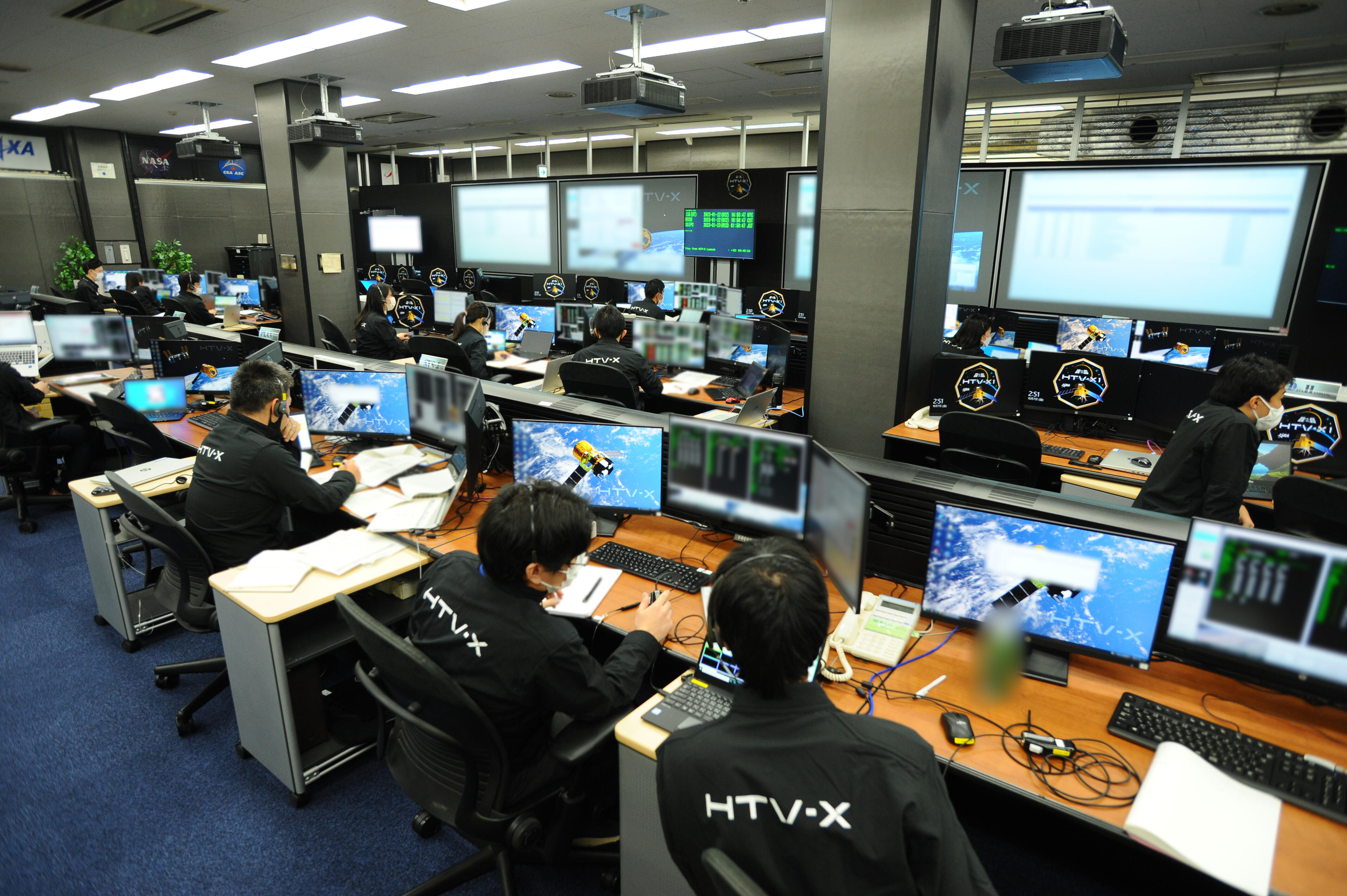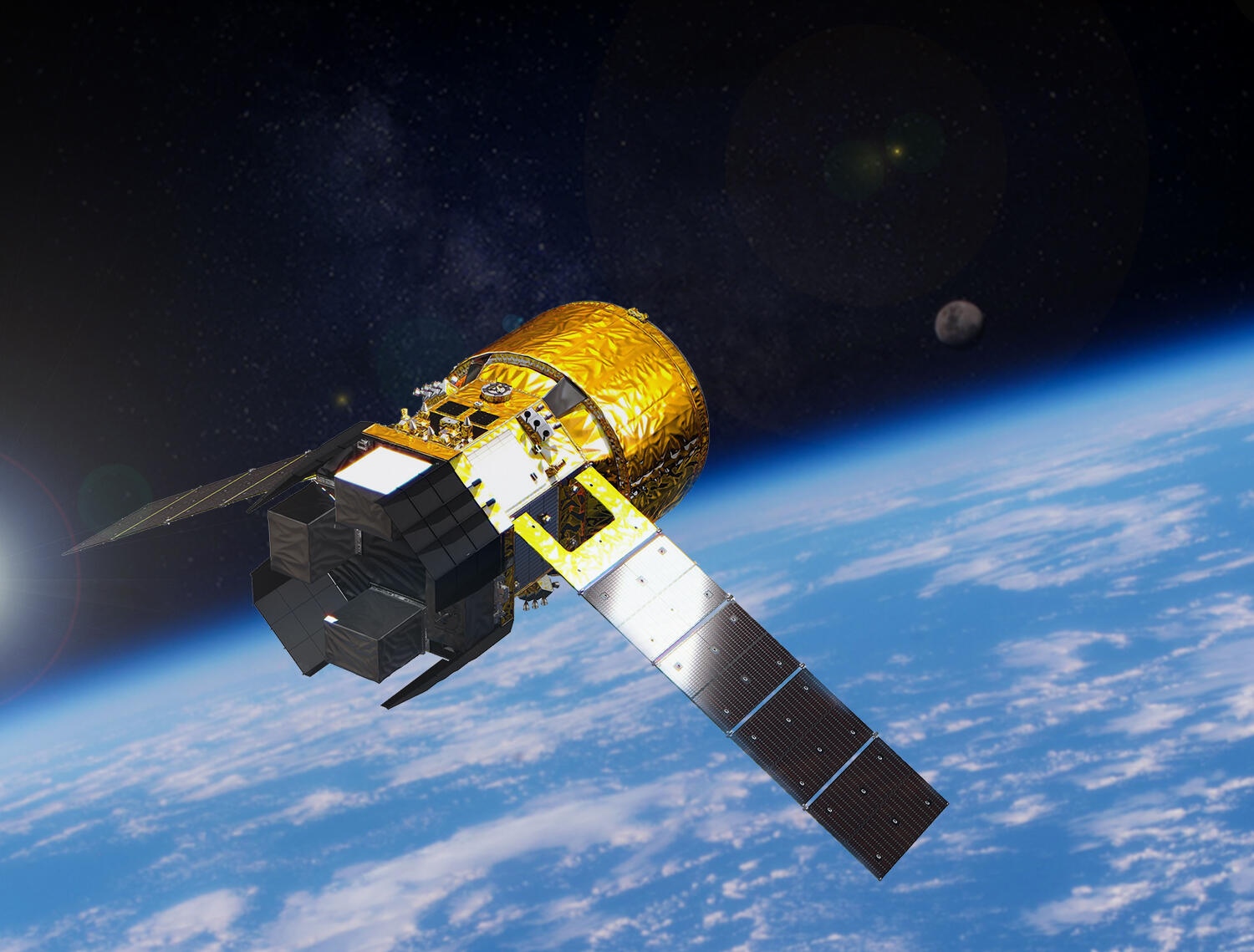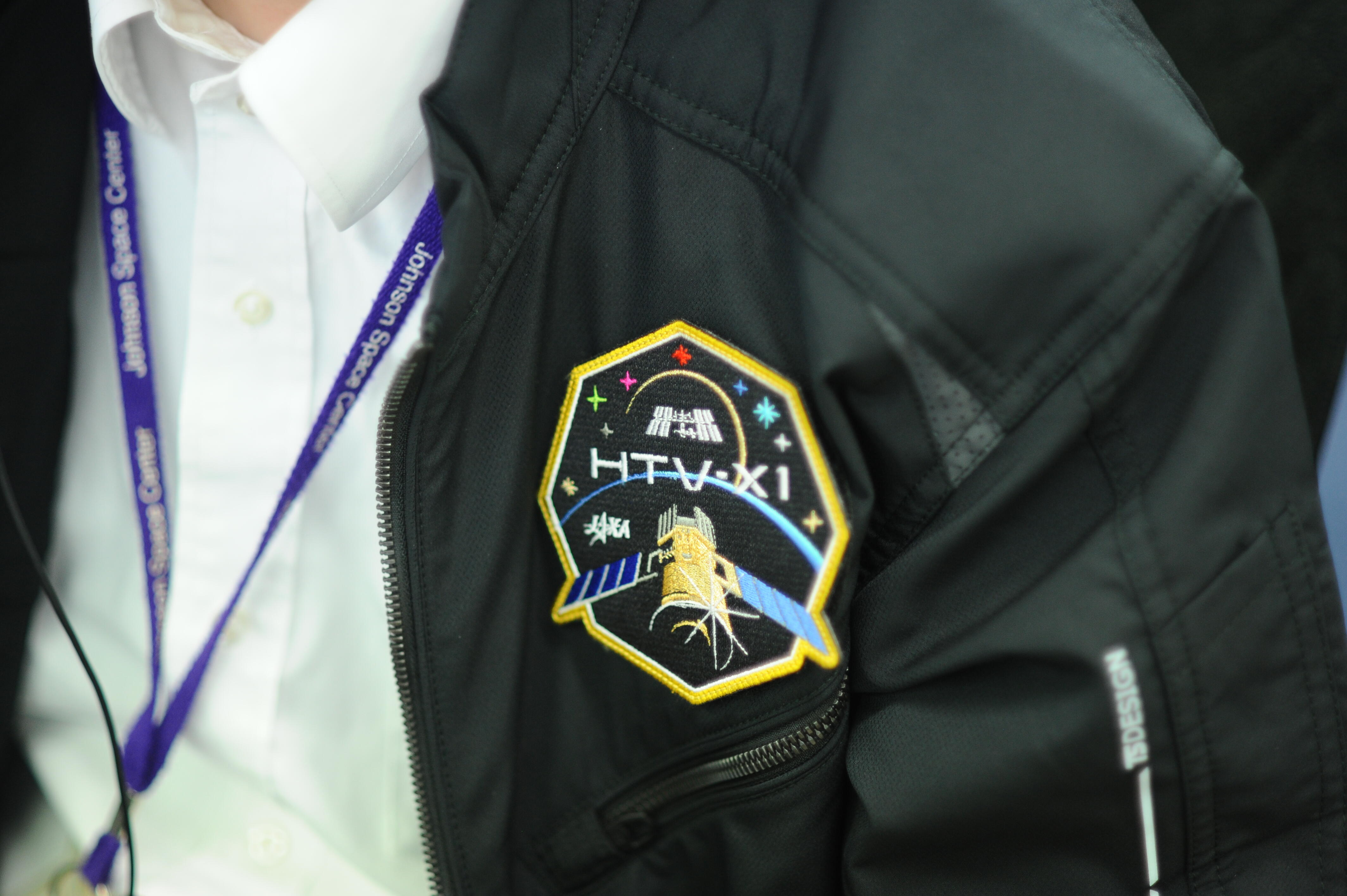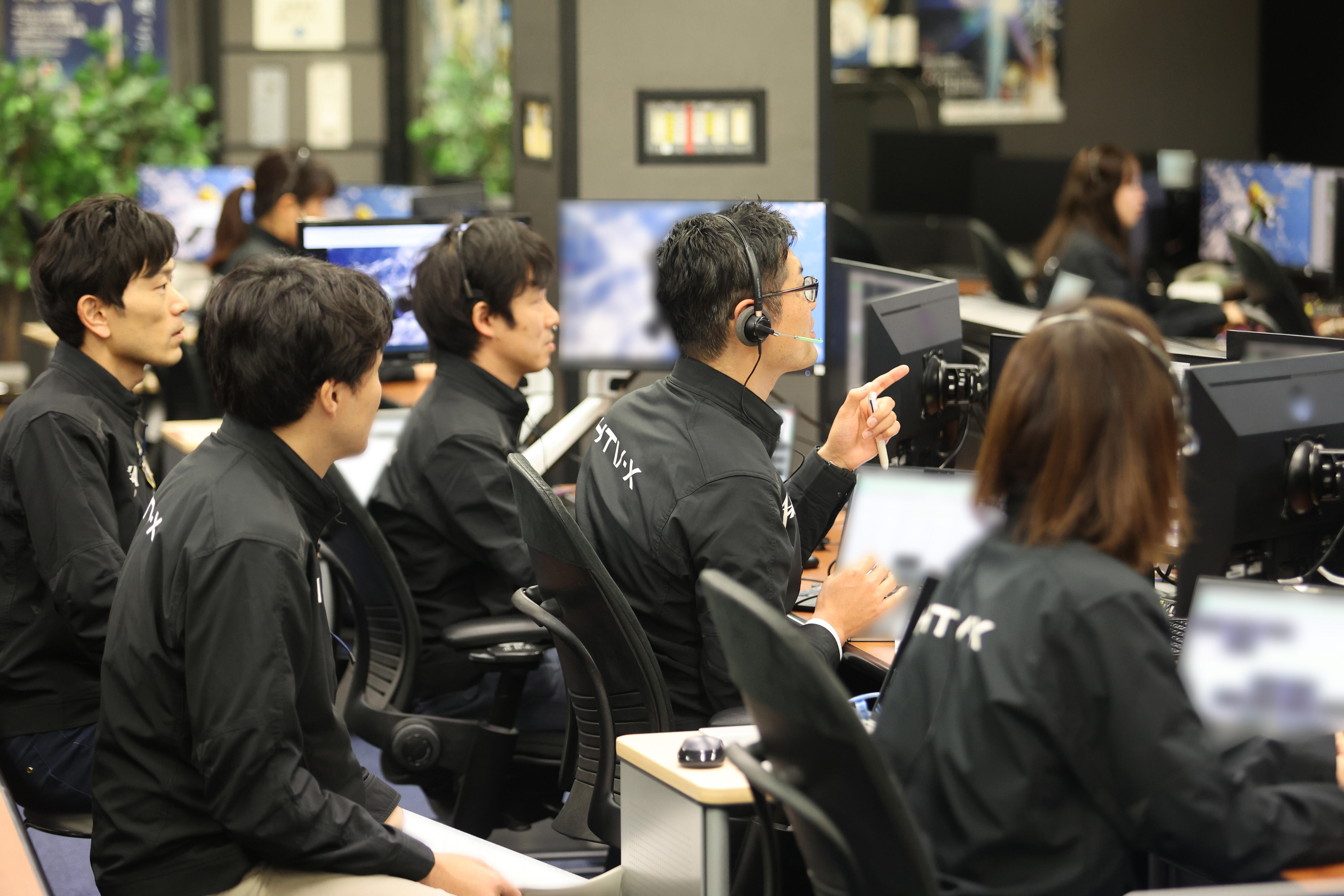
Human Spaceflight Technology Directorate

Renovated HTV-X Mission Control Room
New Unmanned Cargo Transfer Spacecraft HTV-X
Mission Control Room Renovated for HTV-X Mission
The new unmanned cargo transfer spacecraft (HTV-X) is being developed to carry supplies to the International Space Station (ISS). The mission control room has been renovated in parallel with HTV-X development. We interviewed project members SAITO Kei and KAIDE Risa about the refurbished mission control room and this project.
HTV-X carries on the spirit of KOUNOTORI
The HTV-X currently under development by JAXA is the functional and technological successor to the H-II Transfer Vehicle (HTV) known as “KOUNOTORI.” A new resupply vehicle has been eagerly awaited ever since KOUNOTORI, actively used from 2009 to deliver numerous supplies to the International Space Station (ISS), ceased operations in 2020. The mission unit comprising two teams - the operation team for mission control and the technical team for technology evaluation - will be responsible for operating the new resupply spacecraft.
“The HTV-X's main mission is to transport supplies to the ISS. The supplies to be transported include equipment needed for research and experiments on the ISS as well as food to sustain the astronauts. The HTV-X has a lighter structure than KOUNOTORI, and has evolved to be able to carry more cargo.”
This is how Saito, who is involved in the development and integration of the vehicle systems to carry exposed cargos, i.e., equipment to be used outside the ISS, described the HTV-X.

Responsible for post-launch ground system mission control and software development for HTV-X operations, Kaide followed up by describing the HTV-X's features.
“The HTV-X's pressurized module will allow cargo to be loaded up to 24 hours prior to launch, a significant reduction from the 80 hours prior to launch needed for KOUNOTORI. It'll also be capable of carrying cargo requiring power supply. This'll make it possible to load experimental samples that require experimental conditions be established just before launch, refrigerators that need power supply, and so on. Once the cargo has been delivered to the ISS, the module will be able to conduct experiments in orbit for up to a year and a half, and it is expected to contribute to future space development through its ability to transport cargo to the Gateway manned lunar orbiting platform.”
Creating a mission control room that facilitates improved functionality and teamwork
In parallel with the development of the HTV-X, the mission control room was renovated.
The mission control room is a location that plays an important role in supporting spacecraft operations, so what exactly was changed during this renovation?
“The pre-renovation mission control room had been in use for 14 years since the days of KOUNOTORI, and it was divided into two rooms, one for the operation team and one for the technical team. The space was remodeled into a single room during the renovation so that the teams can easily share information about what is going on and where. The purposes of the renovation were to facilitate communication and improve teamwork.”
Kaide went on to say, “If we were going to renovate the room, we wanted to make it a place where everyone can work with a high level of motivation and focus,” indicating that consideration had been given to comfort and design in addition to functionality. The interior design was determined by repeatedly surveying unit members and incorporating their opinions on what kinds of fixtures, audio terminals, and equipment would create an environment conducive to work.
“The revamped mission control room is rectangular in shape, with large displays arranged side by side in the front of the room for easy viewing from any seat. The walls are black, so when I enter the room, I feel braced to get down to work. My seat is in a back corner, but when I look up I can see at a glance what the other members are doing, and I get a better feel than before of each team's status and mood.”
“Because we spend more than eight hours a day in the mission control room, it's important to have an environment that allows us to maintain our concentration and comfort,” she continued. “It's vital to place specific personnel in charge so that everyone can understand what is happening within the team” to ensure quick and coordinated responses in the event of an emergency.
The construction work took about two months, and she recalls feeling a sense of accomplishment when it was completed. “On the day we went through our first training exercise in the renovated mission control room, I felt a renewed sense of unity and commitment to our mission's success.”
New uniforms and logo for a more unified team

Mission mark for the first HTV-X flight
The HTV-X project, which places great importance on teamwork, has been pursuing another scheme along with renovating the mission control room: redesigning the mission mark and uniforms.
“JAXA creates a mission mark for each project, and the mark for the HTV-X features an image of the HTV-X heading toward the ISS in the center, with nine stars shining in space representing the mission colors of each of the nine KOUNOTORI flights. The design reflects our desire to carry on the spirit of our predecessors and connects the HTV-X to the Moon beyond the ISS and to the future beyond that.”
The uniforms bearing this mission mark on the chest were also greatly improved from the previous garments.
“The earlier uniforms had very much the feel of work clothes, but the HTV-X uniforms are designed with the same black base color as that of the mission control room. They are lightweight and comfortable to wear for long periods of time and easy to move around in, which helps us concentrate better. Everyone wears these uniforms during training and other activities, and we all feel a sense of unity.”
Joint training was recently begun with NASA, and Saito says that NASA members have expressed an interest in wearing these uniforms, with some of them actually wearing them now.
“The HTV-X operations require cooperation with NASA, which is responsible for all ISS operations. By wearing the same uniform, we hope to foster a deeper sense of solidarity.”

Both Saito and Kaide are in their third year with JAXA, and the HTV-X will be the first spacecraft they have ever developed and operated. They plan to go through more rigorous training and operational preparation for the launch.
“I'm both nervous and excited at the same time. I'd like to do my best so that HTV-X will enjoy the same popular support as the earlier HTV, better known by its nickname KOUNOTORI. To achieve this, I hope to see all the members working together as one team to make the mission a success.”

Profile

|
|
|---|

|
|
|---|
All the images are copyrighted ©JAXA unless otherwise noticed.
- Home>
- Global Activity>
- Public Relations>
- JAXA’s>
- JAXA's No.93>
- Mission Control Room Renovated for HTV-X Mission